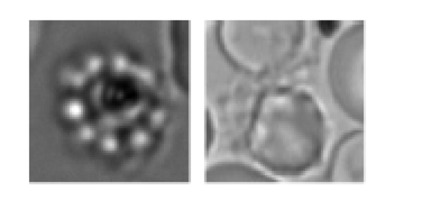当前位置:
X-MOL 学术
›
Int. J. Parasitol.
›
论文详情
Our official English website, www.x-mol.net, welcomes your
feedback! (Note: you will need to create a separate account there.)
Screening the Medicines for Malaria Venture Pathogen Box for invasion and egress inhibitors of the blood stage of Plasmodium falciparum reveals several inhibitory compounds.
International Journal for Parasitology ( IF 3.7 ) Pub Date : 2020-03-02 , DOI: 10.1016/j.ijpara.2020.01.002 Madeline G Dans 1 , Greta E Weiss 2 , Danny W Wilson 3 , Brad E Sleebs 4 , Brendan S Crabb 5 , Tania F de Koning-Ward 6 , Paul R Gilson 2
International Journal for Parasitology ( IF 3.7 ) Pub Date : 2020-03-02 , DOI: 10.1016/j.ijpara.2020.01.002 Madeline G Dans 1 , Greta E Weiss 2 , Danny W Wilson 3 , Brad E Sleebs 4 , Brendan S Crabb 5 , Tania F de Koning-Ward 6 , Paul R Gilson 2
Affiliation

|
With emerging resistance to frontline treatments, it is vital that new drugs are identified to target Plasmodium falciparum. One of the most critical processes during parasites asexual lifecycle is the invasion and subsequent egress of red blood cells (RBCs). Many unique parasite ligands, receptors and enzymes are employed during egress and invasion that are essential for parasite proliferation and survival, therefore making these processes druggable targets. To identify potential inhibitors of egress and invasion, we screened the Medicines for Malaria Venture Pathogen Box, a 400 compound library against neglected tropical diseases, including 125 with antimalarial activity. For this screen, we utilised transgenic parasites expressing a bioluminescent reporter, nanoluciferase (Nluc), to measure inhibition of parasite egress and invasion in the presence of the Pathogen Box compounds. At a concentration of 2 µM, we found 15 compounds that inhibited parasite egress by >40% and 24 invasion-specific compounds that inhibited invasion by >90%. We further characterised 11 of these inhibitors through cell-based assays and live cell microscopy, and found two compounds that inhibited merozoite maturation in schizonts, one compound that inhibited merozoite egress, one compound that directly inhibited parasite invasion and one compound that slowed down invasion and arrested ring formation. The remaining compounds were general growth inhibitors that acted during the egress and invasion phase of the cell cycle. We found the sulfonylpiperazine, MMV020291, to be the most invasion-specific inhibitor, blocking successful merozoite internalisation within human RBCs and having no substantial effect on other stages of the cell cycle. This has significant implications for the possible development of an invasion-specific inhibitor as an antimalarial in a combination based therapy, in addition to being a useful tool for studying the biology of the invading parasite.
中文翻译:

筛选用于恶性疟原虫血液阶段的侵袭和外出抑制剂的疟疾风险病原体药箱发现了几种抑制性化合物。
随着人们对一线治疗方法的抵抗力不断增强,确定针对恶性疟原虫的新药至关重要。寄生虫无性生命周期中最关键的过程之一是红细胞(RBC)的入侵和随后的流出。在外逃和入侵过程中,会使用许多独特的寄生虫配体,受体和酶,这对于寄生虫的增殖和存活至关重要,因此使这些过程成为可治疗的靶标。为了确定潜在的外发和入侵抑制剂,我们筛选了针对疟疾风险病原体药盒的药物,这是一个针对被忽视的热带病的400个化合物文库,其中包括125种具有抗疟疾活性的化合物。在此屏幕中,我们利用了表达生物发光报告基因纳米荧光素酶(Nluc)的转基因寄生虫,在病原盒化合物存在的情况下测量对寄生虫外出和入侵的抑制。在2 µM的浓度下,我们发现15种抑制寄生虫逸出> 40%的化合物和24种侵入特异性化合物抑制> 90%的入侵。我们通过基于细胞的分析和活细胞显微镜进一步鉴定了11种抑制剂,并发现了两种抑制裂殖子裂殖子成熟的化合物,一种抑制裂殖子外泌的化合物,一种直接抑制寄生虫入侵的化合物,以及一种减缓入侵的化合物。被捕的环形成。其余的化合物是一般的生长抑制剂,它们在细胞周期的流出和侵袭阶段起作用。我们发现磺酰基哌嗪MMV020291是最具侵入特异性的抑制剂,阻断人红细胞内成功的裂殖子内在化,并且对细胞周期的其他阶段没有实质性影响。这不仅是研究侵入性寄生虫生物学的有用工具,而且对于基于联合疗法的抗疟疾药物侵袭特异性抑制剂的可能开发具有重要意义。
更新日期:2020-03-03
中文翻译:

筛选用于恶性疟原虫血液阶段的侵袭和外出抑制剂的疟疾风险病原体药箱发现了几种抑制性化合物。
随着人们对一线治疗方法的抵抗力不断增强,确定针对恶性疟原虫的新药至关重要。寄生虫无性生命周期中最关键的过程之一是红细胞(RBC)的入侵和随后的流出。在外逃和入侵过程中,会使用许多独特的寄生虫配体,受体和酶,这对于寄生虫的增殖和存活至关重要,因此使这些过程成为可治疗的靶标。为了确定潜在的外发和入侵抑制剂,我们筛选了针对疟疾风险病原体药盒的药物,这是一个针对被忽视的热带病的400个化合物文库,其中包括125种具有抗疟疾活性的化合物。在此屏幕中,我们利用了表达生物发光报告基因纳米荧光素酶(Nluc)的转基因寄生虫,在病原盒化合物存在的情况下测量对寄生虫外出和入侵的抑制。在2 µM的浓度下,我们发现15种抑制寄生虫逸出> 40%的化合物和24种侵入特异性化合物抑制> 90%的入侵。我们通过基于细胞的分析和活细胞显微镜进一步鉴定了11种抑制剂,并发现了两种抑制裂殖子裂殖子成熟的化合物,一种抑制裂殖子外泌的化合物,一种直接抑制寄生虫入侵的化合物,以及一种减缓入侵的化合物。被捕的环形成。其余的化合物是一般的生长抑制剂,它们在细胞周期的流出和侵袭阶段起作用。我们发现磺酰基哌嗪MMV020291是最具侵入特异性的抑制剂,阻断人红细胞内成功的裂殖子内在化,并且对细胞周期的其他阶段没有实质性影响。这不仅是研究侵入性寄生虫生物学的有用工具,而且对于基于联合疗法的抗疟疾药物侵袭特异性抑制剂的可能开发具有重要意义。











































 京公网安备 11010802027423号
京公网安备 11010802027423号